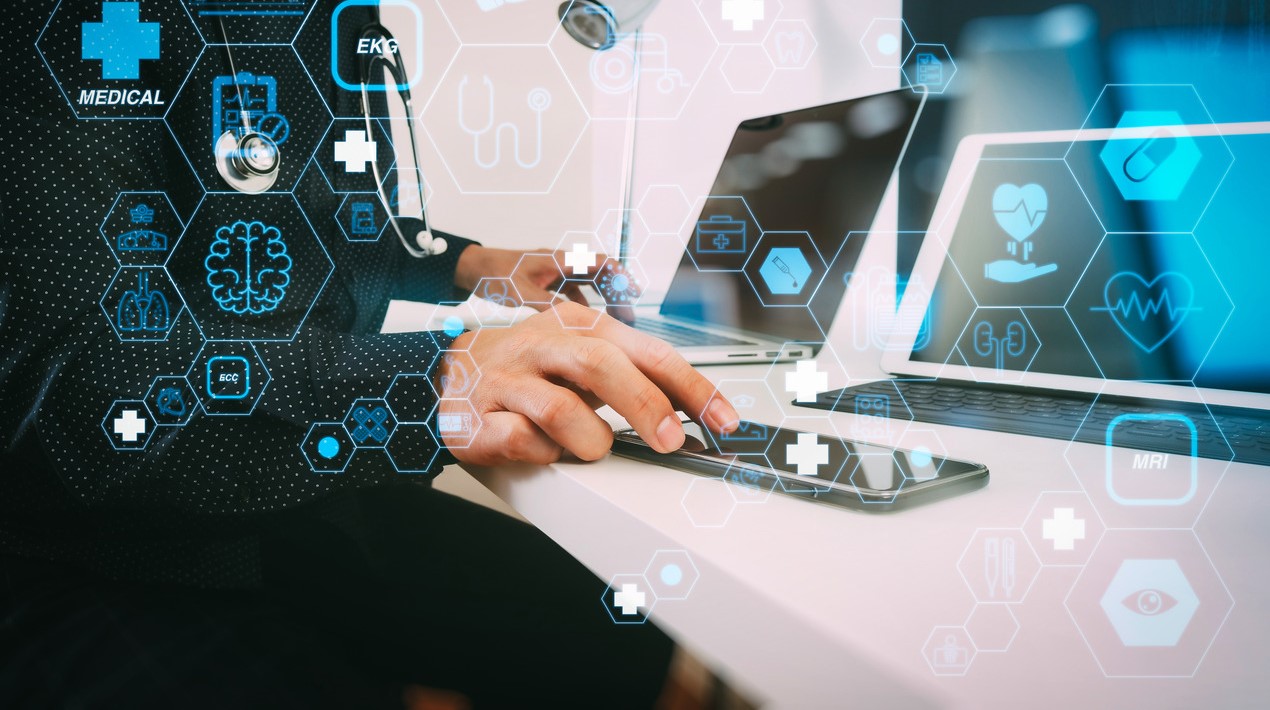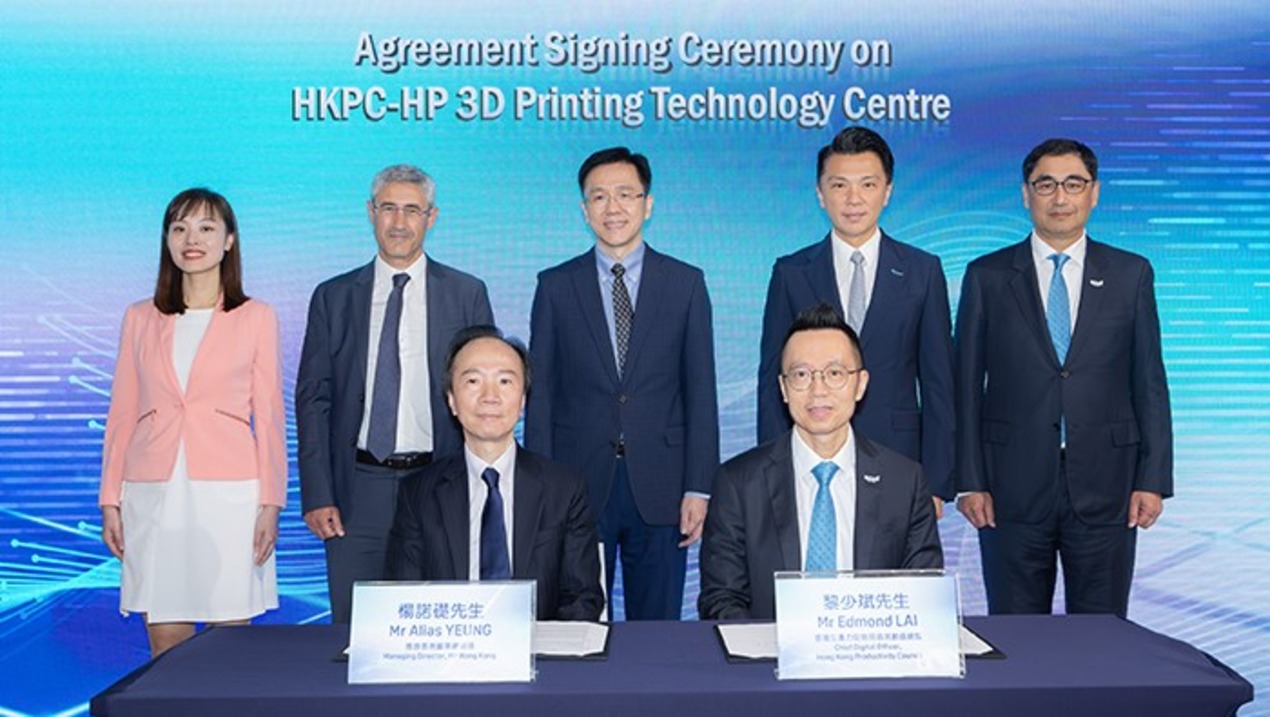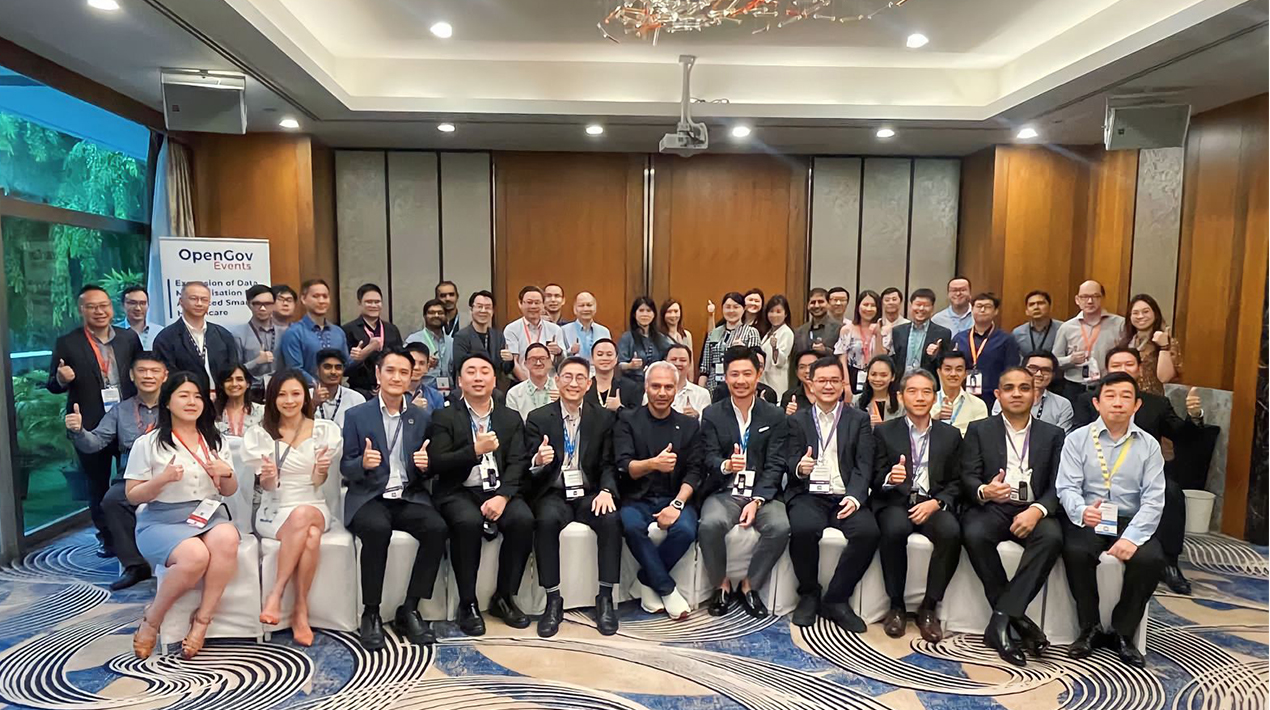
Singapore’s healthcare system, according to international consulting firm Towers Watson, stands out as one of the most efficient and people-centric in the world, providing universal access to affordable and comprehensive health services to ensure the well-being of its citizens.
In its commitment to providing accessible and high-quality basic health services to all, the Singapore Ministry of Health established Integrated Health Information Systems (IHiS). A dedicated HealthTech institution, it takes an integrated approach to implementing information technology in the public health system. It leverages modern technology to enhance patient care and is committed to empowering Singaporeans with knowledge and resources to effectively manage their health.
As Singapore’s elderly population is projected to reach 900,000 by 2030, ensuring comprehensive healthcare for the ageing population becomes a critical priority, especially with the country’s declining birth rate. In anticipation of these challenges, there is a pressing need to prioritise care for this segment and implement holistic preventive strategies supported by technology.
Technology offers numerous advantages to enhance health services and care in Singapore with technology. Initiatives enhance efficiency, optimise resource allocation, reduce cost and contribute to improving healthcare outcomes while aiding sustainability targets.
One area is reducing reliance on paper-based processes to improve administrative efficiency and limit reliance on nonrenewable resources. Integrated data systems utilising cloud computing can efficiently store and access patient data history, ensuring seamless and comprehensive healthcare delivery anywhere, anytime.
Medical devices with remote capabilities enable healthcare providers to deliver services to patients from a distance, leading to enhanced accessibility and convenience. Patients can receive medical consultations, diagnoses and even treatment without the need for in-person visits. This approach is particularly beneficial for individuals who face geographical barriers, mobility limitations, or those requiring continuous monitoring, allowing them to access healthcare services conveniently and receive timely care regardless of their location.
However, in tandem with the adoption of digital transformation in healthcare, prioritising cybersecurity infrastructure and raising awareness about cybersecurity becomes crucial. By implementing robust cybersecurity measures, healthcare organisations can ensure the protection of sensitive data and safeguard against potential cyber threats.
Enhancing cybersecurity infrastructure not only contributes to the overall safety of the healthcare ecosystem but also fosters patient trust and confidence in the security of their personal and medical information.
The OpenGov Breakfast Insight which was held on 28 June 2023 at Voco Orchard, Singapore focused on developing data technology to increase inclusiveness in patient-centric health services and care in Singapore.
Opening Remarks
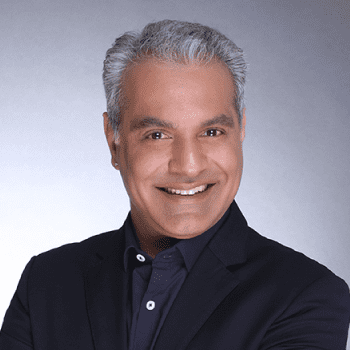
Expressing gratitude to the delegates from different entities for their valuable contributions and insights on digital transformation in healthcare, Mohit Sagar, CEO and Editor-in-Chief of OpenGov Asia, emphasised the significance of such meetings as a steppingstone towards better preparedness for the digital transformation journey.
Mohit believes the positive impact of these collaborative efforts offers the potential to enhance healthcare and services in Singapore, ultimately benefiting the healthcare ecosystem and the well-being of the population.
Mohit acknowledges the importance of embracing data technology in healthcare, highlighting its promise to enhance patient services. With the continuous development of data technology, its adoption can pave the way for the creation of improved and more efficient healthcare services that cater to the needs of patients in Singapore.
To address the concerns related to the expected increase in the aging population (900,000 by 2030), strong collaboration between healthcare providers, government, and technology partners is crucial. By adopting data and embracing technology transformation, Singapore can effectively tackle these challenges.
Genuine partnerships will lead to increased efficiency and improved quality of care, fostering innovation and the development of better health policies, ensuring that the healthcare system is well-equipped to meet the needs of Singapore’s elderly.
Mohit is convinced that leveraging data analytics and technology can significantly enhance the quality of care by enabling informed decision-making. By analysing data and drawing conclusions, healthcare providers can make evidence-based decisions that reduce medical errors and personalise care according to individual patient needs.
Data-driven insights and technology empower healthcare professionals to deliver more precise and effective treatments, ultimately improving patient outcomes and experiences. This tech-powered approach allows for proactive and preventive care, early detection of diseases and individualised treatment strategies, leading to improved patient outcomes, enhanced patient experiences and more efficient healthcare delivery overall.
Through the adoption of data and technology, Singapore can enhance the accessibility and inclusiveness of healthcare for all individuals. Telemedicine and remote monitoring can effectively address geographic barriers and mobility issues, ramping up access to healthcare.
“Patients will be able to receive comprehensive medical examinations remotely through AI-based technology, eliminating the need for them to physically visit the hospital for consultations,” he predicts from developing trends.
However, Mohit also cautions that the technology transformation and implementation of massive data analysis must be accompanied by a strong focus on strengthening safety. As healthcare organisations increasingly embrace technology to enhance patient outcomes and operational efficiency, they must simultaneously address the various challenges associated with cybersecurity and privacy.
Given that health information comprises personal and sensitive data, ensuring data privacy and security becomes a paramount concern. Organisations must implement robust security measures to safeguard patient data from unauthorised access or breaches, while also ensuring compliance with privacy regulations.
Furthermore, institutions must address ethical and legal considerations when leveraging data analytics. It is crucial to establish comprehensive policies and guidelines for the use of patient data, ensuring conformity with ethical principles and relevant legal requirements. This includes actively involving patients and obtaining their informed consent to promote transparency and respect for individual autonomy.
With the growing reliance on patient data for healthcare analytics, safeguarding data security and privacy becomes increasingly crucial. Healthcare organisations must prioritise investments in technologies and robust processes to prevent unethical misuse of patient data. By doing so, they can foster trust, maintain confidentiality and uphold the ethical principles of data handling in healthcare.
“Implementing data and technology into health services is indeed a steep road, but that doesn’t mean it can’t be traversed,” Mohit concludes. “With a clear vision, a strong commitment to security and robust collaboration, the digital transformation of the healthcare sector can drive positive changes throughout the country.”
Welcome Address
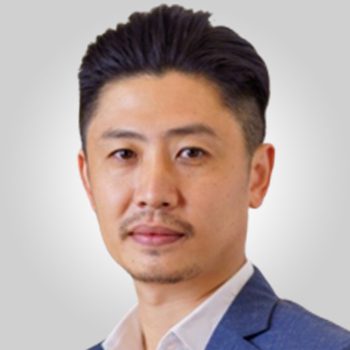
Roy Xu, Director of Sales at CTC Global Pte Ltd, expressed his gratitude for the participation of the attendees, recognising their commitment to knowledge sharing, professional growth and building valuable connections within the industry.
The presence of the participants reflects their dedication to staying informed about the latest developments in healthcare technology and their enthusiasm for driving positive change in the field
“We are fortunate to have such a diverse group of individuals representing various organisations, disciplines, and expertise,” Roy said. “The collective knowledge and experiences that each one of you brings to the table are invaluable and will undoubtedly contribute to the success of our discussions and interactions.”
Networking events provide an exceptional opportunity to connect with like-minded professionals, exchange ideas and build mutually beneficial relationships. Such interactions foster collaborations, explore new possibilities and contribute to achieving greater heights in the respective fields.
“Seize the moment and engage with one another, share insights and actively participate in the sessions and activities planned,” Roy encouraged the participants. “Your unique perspectives and contributions will undoubtedly enrich our collective understanding and inspire new ideas.”
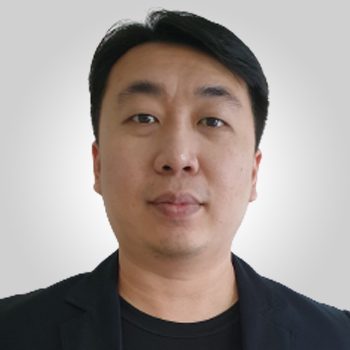
Tan Chin Wee, Sales Director, Hewlett Packard Enterprise also expressed his sincere appreciation to the participants for their time and effort. He felt the session was a remarkable opportunity to expand horizons, enhance skills and develop valuable connections within the industry.
“As we gather here, let us embrace the spirit of collaboration and open-mindedness. This occasion serves as a platform for networking, sharing ideas, and forging meaningful connections. I encourage each and every one of you to actively participate, ask questions and engage in fruitful discussions,” Chin Wee exhorted delegates.
He mentioned the use of data in healthcare that enables improved patient care, personalised medicine, evidence-based decision-making, disease surveillance, and healthcare system optimisation. Also, he emphasised the importance of technology collaboration as a catalyst for innovation, knowledge sharing, efficiency, problem-solving, market expansion and addressing complex challenges.
By embracing collaboration, organisations can tap into a collective pool of expertise, leverage resources and achieve outcomes that would be difficult to accomplish individually.
“By fostering a collaborative culture and forging strategic partnerships, organisations can unlock new opportunities, stay competitive and make a meaningful impact in today’s interconnected world,” Chin Wee concludes.
Technology Insight
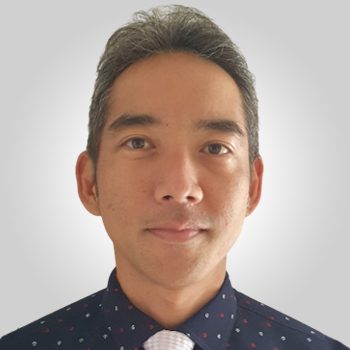
In spite of the intricacies of healthcare funding, Tan Shih Huei, Data and Analytics Practice Lead (APAC) at Hewlett Packard Enterprise, emphasizes the shared aspects of patient care among healthcare providers across different locations. Providers include hospital networks, health systems, medical groups, hospitals, and clinics.
Digital transformation in healthcare encompasses the conversion of analogue body signals, medical records and diagnostic images into actionable information, enabling individuals to make informed health decisions. The rise of the quantified self-trend has empowered patients to access their own health data, while connected medical devices monitor vital signs and seamlessly integrate the data into patient health records.
“We are living in a world where people are digitising themselves,” Shih Huei acknowledges. “People allow their data to be collected and stored digitally to enable access to their records anywhere, any time.”
Telehealth solutions enable seamless data sharing between patients and clinicians, leading to improved care experiences and self-care education. The ongoing digital transformation in healthcare is inevitable and holds significant potential for the future of healthcare delivery.
This transformative approach combines edge and cloud technologies, harnessing extensive data pools to drive precision medicine, gain population health insights, and enhance clinical efficiency. Machine Learning (ML), Artificial Intelligence (AI) and analytics also play a crucial role in connecting and visualising this data along the care pathway.
Shih Huei recognises there are ongoing challenges associated with data modernisation, such as effectively storing and processing large volumes of data, ensuring robust data security and privacy measures and managing the costs and scalability of data infrastructure.
In the digital healthcare landscape, HPE’s collaboration with Carestream will have a significant global impact on medical imaging technology.
“Carestream’s X-ray platforms have achieved widespread adoption in over 140 countries,” reveals Shih Huei. “It has a remarkable installation base of more than 100,000 units and a diverse range of hardware configurations.”
The deployment of Carestream’s advanced AI algorithms on diverse legacy hardware is made easier through HPE GreenLake. This combination aims to enhance medical imaging by leveraging AI for real-time pattern recognition and workflow efficiency.
Shih Huei explains that the systems operate autonomously, with IT updates managed by an in-hospital compute cluster, and data is stored in a distributed data lake accessible throughout the entire hospital. A WAN uplink enables central fleet management across different hospital locations.
In the healthcare system, each hospital’s data lake is connected to a centralised data lake, enabling the sharing of updated information and insights learned from the entire hospital chain. A larger compute cluster in the data centre conducts periodic machine learning analysis to identify new patterns and insights.
“The updated neural network versions required for in-hospital inference engines are then distributed to edge locations,” Shih Huei elaborates. “This iterative process improves diagnosis accuracy across the entire fleet of hospitals and clinics, ultimately contributing to saving lives.”
As data has historical value, data archiving can be backfilled with public cloud instances. This also ensures that rapid recovery is possible should the main data centre be out of commission.
“This is a textbook example of how the needs of the Edge are first established and then Core data centre architecture and public cloud backfill are defined from there,” Shih Huei remarks. “This is the HPE Edge-In strategy in action.”
The GreenLake Edge-In solution stack offers a fully containerised architecture, leveraging Kubernetes distributions across all locations to ensure seamless management. HPE Data Fabric enhances data management efficiency through a global namespace, facilitating the smooth deployment of containerised workloads from the edge to the core to the cloud, while maintaining access to a globally spanning data lake.
According to Shih Huei, HPE servers, storage and networking provide reliable infrastructure both at edge locations and in the data centre, facilitating a distributed IT strategy with the reliability of a single data centre. HPE GreenLake Central serves as the centralised management platform for developers and IT personnel, offering comprehensive control and global status monitoring.
The expected outcomes would be:
- Significantly optimised infrastructure utilisation
- Future-proof architecture incorporating open-source software and ML frameworks
- Single source of truth with a common policy on data security and privacy
- True hybrid solution with no vendor lock-in
- Fully managed with an enterprise-supported and service-level agreement
Shih Huei reiterates that significant technological advancements present opportunities for healthcare organisations to improve their IT delivery and enhance patient care. These advancements can include innovations such as AI, telemedicine, data analytics, electronic health records, and remote monitoring.
“Implementing these technologies can streamline processes, improve efficiency, and enable healthcare providers to deliver more personalised and effective care to patients,” Shih Huei concludes.
Knowledge Insight
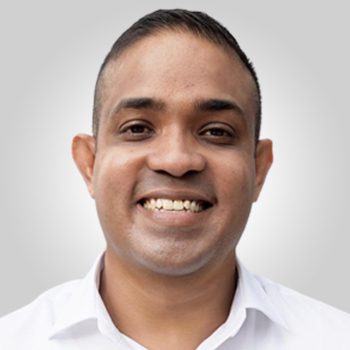
Dr Jared Louis Andre D’Souza, Deputy Group Chief Medical Informatics Officer of NUHS and who is also the Chief Medical Informatics Officer and Consultant in Intensive Care Medicine at Ng Teng Fong General Hospital, believes that the aim of data democratisation is to eliminate barriers and promote accessibility, making data more user-friendly for everyone and empower a better quality of life for all.
“In the past, only a small group of people, like data analysts or IT experts, had access to data,” Jared acknowledges. “Democratisation gives people, businesses, and communities the tools they need to use data to make smart choices, spur innovation, and have a positive effect on society.”
The absence of inclusivity resulted in a power imbalance, where a select few individuals with data access made decisions instead of considering the larger group of users who could have benefited from it. However, with data democratisation, this power disparity is rectified, enabling a broader range of people, including decision-makers, front-line workers, and customers, to gain access to valuable data.
Jared explains that data democratisation entails more than just making data accessible; it also involves ensuring its simplicity and usability. This encompasses providing individuals with the necessary tools and training to effectively analyse and understand data. Additionally, it means cultivating environments within organisations and communities where individuals are encouraged to leverage data for decision-making and fostering innovation.
Jared cites a global survey which suggests that the most successful companies adopt a strategy of making their data accessible to all individuals within the organisation. These companies empower their employees by equipping them with the tools and resources necessary to perform customised queries tailored to their specific needs.
In comparison to businesses that did not fare as well, the aforementioned companies were reported to be 40 times more inclined to acknowledge that analytics had a significant impact on their sales performance.
Nevertheless, data democratisation poses a series of challenges that organisations must address. These obstacles include ensuring equitable access to data for all individuals and teams, establishing robust data governance protocols, maintaining high data quality standards, addressing concerns related to data privacy, and fostering a data-driven culture.
Overcoming these challenges is vital for the effective implementation of data democratisation initiatives. Organisations must have robust infrastructure, well-defined policies, rigorous data verification processes, stringent privacy rules and a shift in their decision-making mindset to be more data-driven.
“Organisations can empower the workforce to make informed choices based on data insights,” Jared concludes. “They can maximise the value of their data assets by giving staff training and support, clear guidelines, analytical tools and fostering a collaborative culture.”
Knowledge Insight

Dr Goh Han Leong, Senior Principal Specialist, Platform Services (Data aNalytics & AI), Integrated Health Information Systems Pte Ltd (IHiS) reveals that IHIS plays a vital role in connecting Singapore’s health ecosystem through technology, serving both the public healthcare sector and citizens.
IHiS empowers healthcare providers with technology, enabling seamless communication and collaboration, efficient healthcare service delivery, streamlined processes, enhanced data exchange, and overall digital transformation of Singapore’s healthcare system.
“With extensive experience gained from multiple transformative projects and years of expertise, we have discovered that the key to success lies in integrating AI and analytics seamlessly into users’ daily processes,” Dr Goh explains. “This is achieved by employing software engineering techniques to embed these technologies into the user experience (UX).”
IHiS enhances the usability and effectiveness of AI and analytics tools, making them an integral part of users’ workflows. This approach ensures that AI and analytics become natural and intuitive components of the users’ routine, maximising their potential for driving insights and enabling data-driven decision-making.
Dr Goh believes for AI to be truly effective, it is essential for it to seamlessly align and adapt to the existing workflow wherever possible. This means integrating AI seamlessly into the existing processes and systems that users are already familiar with, rather than introducing a separate and disconnected workflow.
“By doing so, AI becomes a natural extension of the user’s daily routine, allowing for a smooth and efficient transition into incorporating AI capabilities,” he says.
Achieving this seamless alignment requires a thoughtful approach to design and implementation. The AI solutions need to be tailored to fit seamlessly into the user interface and functionality of existing software or applications. This may involve integrating AI algorithms, models, or predictive capabilities directly into the user interface, automating certain tasks, or providing intelligent recommendations within the existing workflow.
It is crucial to gather feedback from users throughout the process to ensure that the AI integration is truly aligned with their needs and preferences. By continuously iterating and refining the AI implementation based on user feedback, organisations can create a harmonious integration that adds value without disrupting the workflow.
IHIS plays a crucial role in the Ministry of Health’s Hospital to Home (H2H) Programme by harnessing AI technology to create a nationwide predictive model aimed at preventing hospital admissions, highlighted Dr Goh. H2H seeks to improve patient care by proactively identifying individuals at risk of hospital admission and implementing targeted interventions to prevent avoidable hospital stays, thereby enhancing patient outcomes.
Using advanced AI algorithms and predictive analytics, IHIS has developed a sophisticated model that analyses a wide range of data points, including patient demographics, medical history, clinical indicators, and social determinants of health. By processing and analysing this vast amount of data, the predictive model can identify patterns and trends that indicate the likelihood of future hospital admissions.
According to Dr Goh, the nationwide scope of the predictive model enables it to be applied across various healthcare institutions and settings, including hospitals, clinics, and community care facilities. By implementing this model, healthcare professionals can identify patients who are at high risk of hospitalisation and intervene early with appropriate care and support.
The AI-driven predictive model is seamlessly integrated into the existing healthcare systems and workflows, allowing healthcare professionals to access and utilise the predictive insights in real-time. This ensures that the model aligns with the needs of the healthcare providers and becomes an integral part of their decision-making process.
“This proactive approach helps to prevent avoidable hospital admissions, reduce healthcare costs and improve overall patient outcomes,” Dr Goh is convinced.
IHIS continues to refine and enhance the predictive model by continuously collecting and analysing data, incorporating feedback from healthcare professionals, and staying abreast of the latest advancements in AI and predictive analytics. This iterative methodology ensures that the model remains accurate, reliable, and up to date, enabling it to effectively support the H2H Programme and contribute to the delivery of high-quality, patient-centred care.
By leveraging AI technology and the nationwide predictive model for admission prevention, IHIS is empowering healthcare providers to make informed decisions, prioritise resources efficiently, and deliver proactive care to patients. This collaborative effort between IHIS and the Ministry of Health is a testament to the transformative potential of AI in healthcare and its ability to improve outcomes for patients across the nation.
IHIS has also developed an AI prognostication tool specifically designed for community-acquired pneumonia and Covid-19 respiratory infections. This tool utilises AI and advanced analytics to assist healthcare professionals in predicting the prognosis and outcomes of patients with these respiratory conditions.
“By leveraging a vast amount of patient data, including clinical history, vital signs, laboratory results, and imaging findings, the AI prognostication tool can analyse patterns and identify risk factors that may contribute to disease progression or complications,” Dr Goh says. “This enables healthcare providers to make more informed decisions regarding treatment plans, resource allocation, and patient management.”
By integrating the AI prognostication tool into the existing healthcare systems, IHIS ensures seamless adoption and accessibility for healthcare professionals. The tool can be used in various healthcare settings, including hospitals, clinics, and community care facilities, to support clinical decision-making and optimise patient care. IHIS continuously updates and refines the AI prognostication tool as new data becomes available and as medical knowledge advances.
The implementation of the AI prognostication tool by IHIS demonstrates the organisation’s commitment to leveraging cutting-edge technology to enhance healthcare delivery. By providing healthcare professionals with predictive insights, IHIS aims to improve patient outcomes, optimise resource utilisation, and ultimately contribute to the effective management of respiratory infections in the community.
IHIS provides exceptional public service in the healthcare sector. As the key IT organisation supporting Singapore’s public healthcare sector, IHIS plays a crucial role in enabling the delivery of efficient, integrated, and patient-centric healthcare services.
Power Talk: Smart Steps in Strengthening Health Services
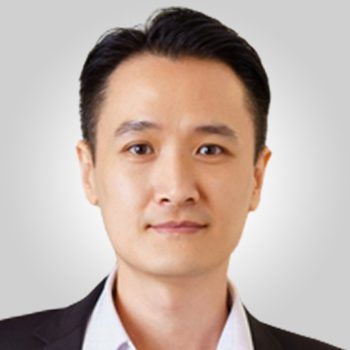
Peh Swee Hong, Chief Technology Officer at CTC Global Pte Ltd, highlights the growing influence of artificial intelligence (AI) in shaping human life and recognises the pivotal role of integrating AI with technology platforms in delivering healthcare services.
He firmly believes that artificial intelligence (AI) has the ability to drive significant improvements in the healthcare sector, especially in Singapore. In his role as Chief Technology Officer, Hong knows well the potential of using data to provide objective recommendations and optimise resource allocation in healthcare.
One question that arises is whether healthcare services can adopt robots as part of the transformation of medical devices to enhance patient care, as suggested by technology experts. Benedict Tan, Group Chief Digital Strategy Officer (GCDSO) & Chief Data Officer (CDO) of Singapore Health Services (SingHealth), considers this highly probable.
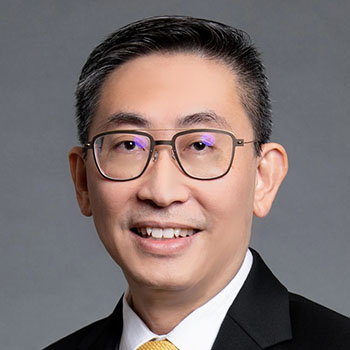
“We already see that the presence of robots in health services has a positive impact on improving patient care,” Benedict shares.
The implementation of various robots in medical settings worldwide has significantly benefited surgeons by enhancing their capabilities and assisting in complex procedures. These robotic systems offer improved visualisation, increased precision, a broader range of motion and enable minimally invasive surgeries, resulting in smaller scars and faster patient recovery.
As an example, robotic-assisted surgery has demonstrated remarkable effectiveness in urological, gynaecological and cardiovascular procedures, leading to improved patient outcomes and reduced complications. The precise control and enhanced imaging provided by robotic systems contribute to the success and safety of these surgical interventions.

Asst Prof Eric Wong, Group Data & Strategy Officer (GCDSO) at the National Healthcare Group, reveals that integrating and enforcing data transparency within a unified cloud computing platform can maximise the potential of healthcare services.
By integrating fragmented data sources into a centralised repository, such as cloud computing, comprehensive data analysis becomes possible, leading to a deeper understanding of population health conditions, disease trends, and risk factors that impact public health. This enables more informed decision-making and targeted interventions to improve public health outcomes.
The utilisation of cloud computing for storing and managing health data facilitates seamless access, enhanced efficiency and improved collaboration among various entities within the healthcare system. Storing data in the cloud ensures secure and real-time accessibility for medical professionals, researchers and other healthcare providers.
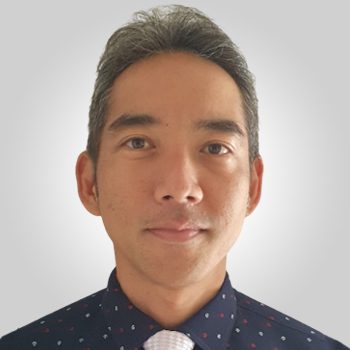
According to Tan Shih Huei, the adoption of patient-centric orientation through well-integrated electronic medical records enables healthcare providers to deliver effective and efficient services. By leveraging electronic medical records, healthcare professionals can access comprehensive patient information, leading to improved care coordination and personalised treatment plans.
EHR adoption has become a priority for healthcare organisations in the APAC region, as the system provides significant benefits in patient data management, care coordination, and increased operational efficiency. Patient health information can be easily accessed by different healthcare providers, enabling better care coordination and better decision-making.
The implementation of the National Electronic Health Record (NEHR) system in Singapore since 2010 has been a significant step towards achieving better care coordination and decision-making. The NEHR programme aims to provide a comprehensive view of patient health information, aligning with the vision of “One Singaporean, One Medical Record” set by the Ministry of Health.
The NEHR system enables the exchange of essential medical information, including patient demographic data, allergies, clinical diagnoses, drug histories, radiology reports, laboratory tests and patient summaries between healthcare providers.
The implementation of the National Electronic Health Record (NEHR) system in Singapore enables accurate and timely exchange of information between healthcare providers, resulting in improved treatment decisions, appropriate care, disease management, and cost savings.
From a patient perspective, NEHR helps eliminate unnecessary testing, reduces medication errors and ensures they receive the most suitable care, leading to better health outcomes and improved efficiency in the healthcare system.
The advancements in technology bring substantial advantages, but they also bring forth challenges and ethical considerations, she acknowledges. Cyber safety and security emerge as crucial and sensitive concerns, demanding utmost attention. Safeguarding the privacy and security of patient information must be accorded top priority to ensure trust and confidentiality in healthcare services.
Moreover, the impact of digital transformation on employment causes worries as certain job roles may be replaced by technology. As tasks and processes that were once performed by humans are increasingly automated, there is a genuine concern that some roles may become obsolete or significantly reduced in demand. This can lead to job displacement and potential unemployment for individuals in those roles.
Ethical considerations encompass potential biases in algorithms, preserving patient autonomy in decision-making and establishing clear regulations and guidelines governing the use of robotics in the healthcare sector.
Therefore, meticulous planning and collaboration are imperative to ensure the ongoing enhancement of patient services alongside technological and data advancements while upholding ethical standards.
Closing Remarks
Peh Swee Hong underscored the continuous advancements in technology and data, particularly in the fields of artificial intelligence and machine learning. As these technologies evolve, they hold the potential to revolutionise healthcare by transforming data into valuable insights that can offer objective patient recommendations in an easily understandable manner.
“While the growth of technology and data in healthcare brings numerous positive impacts, it is crucial to remain mindful of the potential consequences, particularly in terms of data security,” he cautions. “As the use of technology and data expands, ensuring the security and privacy of sensitive information must become an increasingly important priority.”
In the pursuit of delivering high-quality healthcare services, it is essential to recognise that adopting and enhancing health infrastructure alone is insufficient. Equally important are aspects such as patient safety, ethical data processing and the establishment of clear regulations pertaining to data management. Prioritising data security not only protects individuals’ privacy but also contributes to overall health service satisfaction.
Ensuring data security is crucial for healthcare providers, and it involves adopting robust security measures such as data encryption, access monitoring, and strict privacy policies. By safeguarding data, including sensitive patient information, healthcare providers can prevent unauthorised access and misuse, thereby instilling a sense of protection and trust among patients.
Mohit expressed his appreciation to the participants for their dedication and commitment to enhancing healthcare quality through the use of data and technology. He was optimistic that the collaborative efforts would continue, resulting in the creation of innovative solutions that bring positive impacts to patients and healthcare providers.
Collaboration among the government, the private sector and the community in achieving the vision of improved health services through the use of data and technology is essential. The complex landscape of healthcare requires a multi-faceted approach that involves the active participation of healthcare providers, policymakers, technology experts, ethicists, rights advocates, patients and the wider community.
Working together, organisations can harness the power of shared knowledge, skills and developments to drive meaningful progress, overcome obstacles and seize new opportunities in today’s rapidly evolving landscape. With empowering data and technology, they are likely to make significant contributions to patient care, research and overall healthcare outcomes.
“By encouraging and supporting such initiatives, we can foster ongoing progress in the healthcare sector, leading to further advancements and improvements,” Mohit concludes. “Ultimately, this will have a positive impact on patients, enhancing their access to high-quality care and contributing to the overall well-being of the community.”




